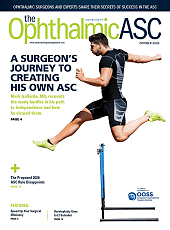When Mark Brower, DO, and his colleagues noticed they were constantly reordering boxes of disposable eye pressure probes at $820 per box, they decided to investigate whether the single-use devices really needed to be single-use. The answer, according to their new study presented at the 129th annual meeting of the American Academy of Ophthalmology, could save eyecare practices thousands of dollars annually while maintaining the same quality of care, the AAO stated in a press release.
As healthcare costs continue to rise, small innovations like this one may offer a path forward for practices seeking to reduce expenses without compromising patient care, the AAO said. For an industry where margins matter and equipment costs add up quickly, the study suggests that sometimes the most valuable discoveries come from simply questioning whether expensive single-use items really need to be thrown away after one use.
"We were spending over $20,000 a year on probes with 5 ophthalmologists," Dr. Brower said. “We had to ask ourselves: Is there a better way?"
According to the AAO, the study tested 60 eyes using 30 probes that underwent a careful reprocessing protocol. After initial use, probes were soaked in 3% hydrogen peroxide for 2 hours, dried on paper towels, and stored in covered metal containers. The team measured each patient's intraocular pressure 3 times: once with a new probe, once with a probe that had been soaked once, and once with a probe soaked twice.
The results were striking. Probes soaked once matched new probe readings within 2 millimeters of mercury in 95% of cases. Probes soaked twice were accurate within the same margin in 90% of cases. The average difference between unused probes and those soaked once was just 0.18 mm Hg.
"We weren't really surprised," Dr. Brower said. "But it does establish in the literature that probes used in this manner give accurate results for screening purposes."
The financial implications are substantial. An average ophthalmologist using 25 probes per day, 4 days a week over 50 weeks, would spend approximately $4,100 annually on disposable probes. Using the reprocessing technique described in the study could reduce that cost to roughly $1,365—a savings of nearly $2,735 per provider per year.
For Dr. Brower's 5-physician practice, the potential savings approach $14,000 annually.
The researchers emphasized that their approach is designed for screening purposes in general ophthalmology settings. Glaucoma patients and glaucoma suspects, who require more precise measurements, continue to be tested with Goldman tonometry performed by ophthalmologists—a different, more precise method. Dr. Brower’s practice uses iCare measuring devices for routine exams, emergencies, and post-operative patients.
The study methodology was deliberately practical. Dr. Brower noted that the probes aren't sterile to begin with, they come in boxes of 50 or 100, handled by multiple technicians' fingers. After reprocessing, the probes are stored in a "clean" rather than sterile environment, which the researchers argue is likely no different from the original packaging after it's been opened and used.
Several published studies have documented hydrogen peroxide as an effective means of sterilization, lending support to the approach. The 3% hydrogen peroxide solution is inexpensive and available to any practice, making the technique easily replicable.
Dr. Brower plans to expand his study to include more eyes for better statistical analysis. He also wants to test whether probes can be safely reused up to 5 times—an initial use plus 4 hydrogen peroxide soaking cycles—which could further reduce costs.








